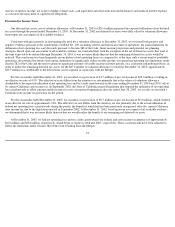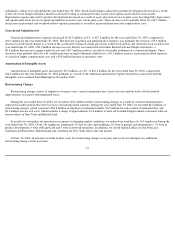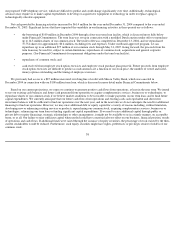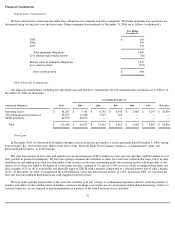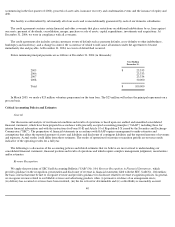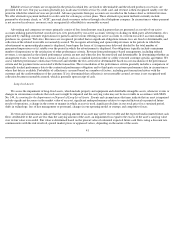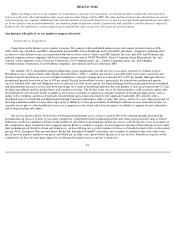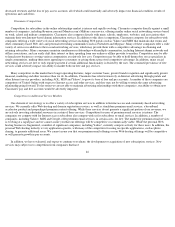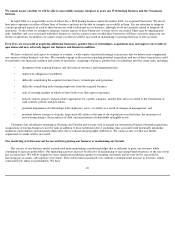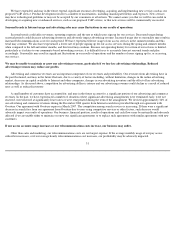Classmates.com 2004 Annual Report Download - page 43
Download and view the complete annual report
Please find page 43 of the 2004 Classmates.com annual report below. You can navigate through the pages in the report by either clicking on the pages listed below, or by using the keyword search tool below to find specific information within the annual report.
Billable services revenues are recognized in the period in which fees are fixed or determinable and the related products or services are
provided to the user. Our pay accounts generally pay in advance for their service by credit card, and revenue is then recognized ratably over the
period in which the related services are provided. Advance payments from pay accounts are recorded on the balance sheet as deferred revenue.
We offer alternative payment methods to credit cards for certain pay service plans. These alternative payment methods currently include
payment by electronic check, or "ACH", personal check or money order or through a local telephone company. In circumstances where payment
is not received in advance, revenue is only recognized if collectibility is reasonably assured.
Advertising and commerce revenues primarily consist of fees from Internet search partners that are generated as a result of our active
accounts utilizing partner Internet search services, fees generated by our active accounts viewing or clicking on third-party advertisements, fees
generated by enabling customer registrations for partners and fees from referring our active accounts to, or from our active accounts making
purchases on, sponsors' Web sites. Revenues are recognized provided that no significant obligations remain, fees are fixed or determinable, and
collection of the related receivable is reasonably assured. We recognize advertising and sponsorship revenues in the periods in which the
advertisement or sponsorship placement is displayed, based upon the lesser of (i) impressions delivered divided by the total number of
guaranteed impressions or (ii) ratably over the period in which the advertisement is displayed. Our obligations typically include a minimum
number of impressions or the satisfaction of other performance criteria. Revenue from performance-based arrangements, including referral
revenues, is recognized as the related performance criteria are met and when the fees become fixed and determinable. In determining whether an
arrangement exists, we ensure that a contract is in place, such as a standard insertion order or a fully executed customer-specific agreement. We
assess whether performance criteria have been met and whether the fees are fixed or determinable based on a reconciliation of the performance
criteria and the payment terms associated with the transaction. The reconciliation of the performance criteria generally includes a comparison of
internally tracked performance data to the contractual performance obligation and to third-party or customer performance data in circumstances
where that data is available. Probability of collection is assessed based on a number of factors, including past transaction history with the
customer and the creditworthiness of the customer. If it is determined that collection is not reasonably assured, revenue is not recognized until
collection becomes reasonably assured, which is generally upon receipt of cash.
Long-lived Assets
We assess the impairment of long-
lived assets, which include property and equipment and identifiable intangible assets, whenever events or
changes in circumstances indicate that such assets might be impaired and the carrying value may not be recoverable in accordance with SFAS
No. 144,
Accounting for the Impairment or Disposal of Long-Lived Assets . Events and circumstances that may indicate that an asset is impaired
include significant decreases in the market value of an asset, significant underperformance relative to expected historical or projected future
results of operations, a change in the extent or manner in which an asset is used, significant declines in our stock price for a sustained period,
shifts in technology, loss of key management or personnel, changes in our operating model or strategy and competitive forces.
If events and circumstances indicate that the carrying amount of an asset may not be recoverable and the expected undiscounted future cash
flows attributable to the asset are less than the carrying amount of the asset, an impairment loss equal to the excess of the asset's carrying value
over its fair value is recorded. Fair value is determined based on the present value of estimated expected future cash flows using a discount rate
commensurate with the risk involved, quoted market prices or appraised values, depending on the nature of the assets.
41



